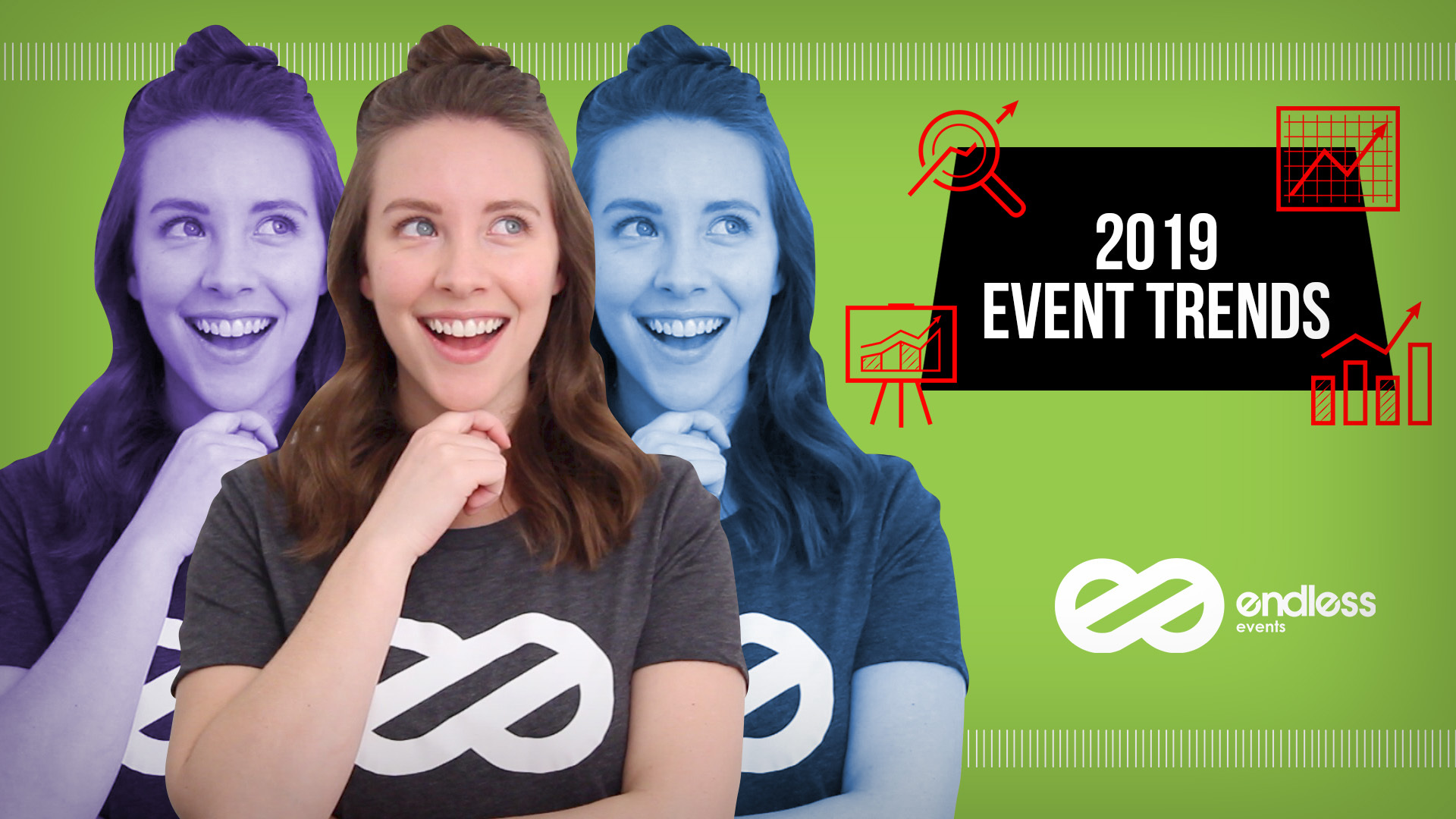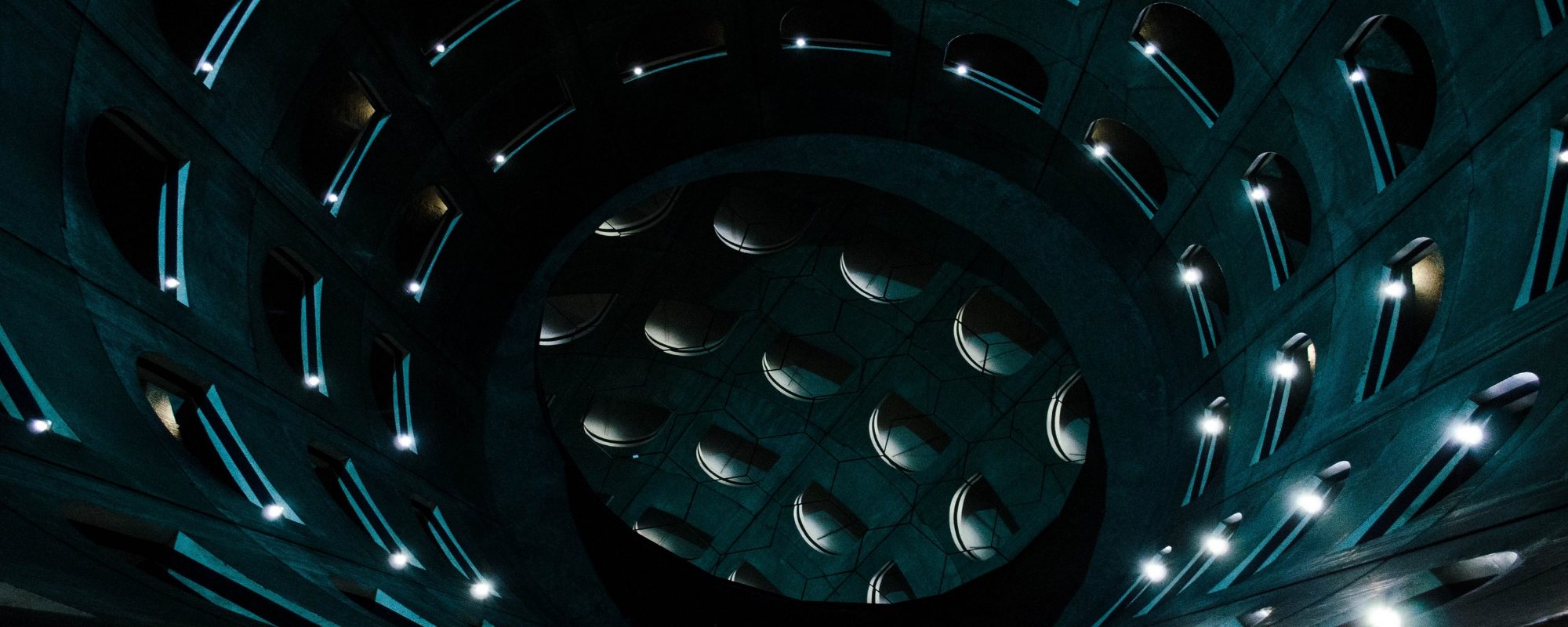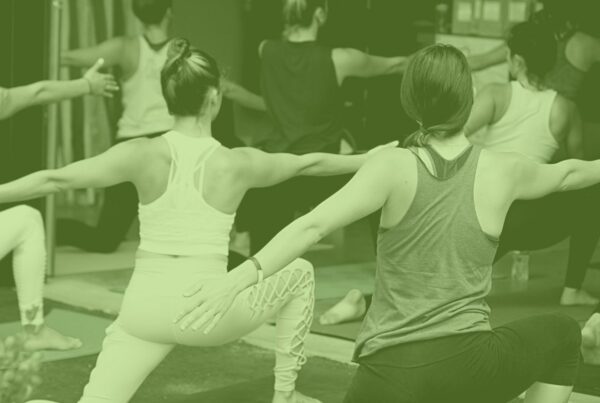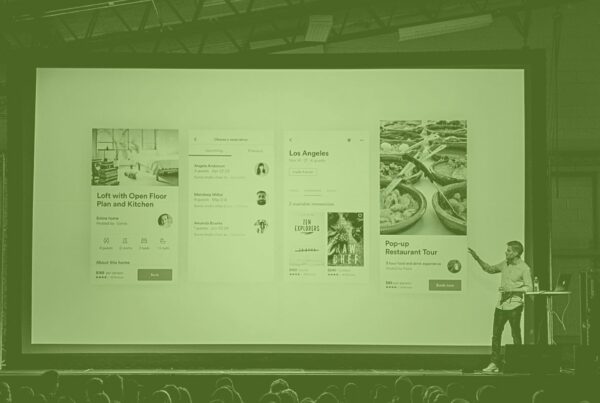Whoa, whoa, whoa! Why are you looking at the 2019 event trends? That time has already passed! Be sure to look at our guide to 2022 Event Trends right here.
The year 2019 is almost upon us. How will the events industry fare this year, and what trends will rule the roost when it comes to event planners’ priorities? Let’s take a look at these 2019 event trends and how you can ride their waves successfully.

Here are the biggest 2019 event trends:
- Your Audience Craves Authenticity
- Infusing Events With Hands-On Experiences
- Brain Dates: Networking 2.0
- Bleisure Travel Becomes The New Norm
- Using Metrics for Crowdshaping and Customization
- Saving on WiFi Costs
- Enhancing Event Cybersecurity
- Diversity Takes Root
- Sustainability Is Part of the Plan
- Facial Recognition for Security and Feedback
- New Rules for Influencers
- Using Wearable Tech Wisely
- Adding Personality to Chatbots
- Standing Out With Stage Design
- Furniture That’s Both Social And Empowering
#1 2019 Event Trend: Your Audience Craves Authenticity
Despite the increasing number of events held yearly, many still feel like copycats of other successful conferences. These events fail to establish their own identity, relying instead on mimicking what made others successful.
This is no longer going to fly in 2019. Authenticity is important for immersion, but that only comes about when the event’s purpose is clear. It’s not just about plastering your brand all over the place, but also proving your expertise in the industry.
Authenticity involves making the right decisions every step of the way. Are we choosing sponsors that match our value? Do our topics reflect our event’s purpose and do they resonate with our audience? Do our speakers and influencers reflect our brand well? There are many ways to implement this particular 2019 event trend – get creative.
#2: Infusing Events With Hands-On Experiences
Interactivity during events isn’t limited to digital experiences. Workshops are fast becoming the preferred activity for many conferences and meetings. Attendees want to experience, not just witness, whatever the event is about.
Instead of long-winded speeches, short talks are combined with activities that let the audience learn first-hand how to apply what they learned. Hands-on experiences have the advantage of adding extreme value to learning, while also aiding in the stress reduction of the attendees. To facilitate an even deeper level of immersion, make sure your sessions have definite time frames and tangible incentives.
If you are considering adding workshops to your events, keep in mind to choose the appropriate venue that allows people to move freely to facilitate interaction. Also, add some budget to cover the logistics of the activities, both in time and money.
#3: Brain Dates: Networking 2.0
Aside from the traditional conference format and the more immersive workshops, another event format is taking center stage: “brain dates”, one-on-one meetings that foster a new level of knowledge exchange.
Usually, the event organizer facilitates the brain date, asking participants both to fill out what knowledge they have to share as well as the knowledge they want to gain. It sidesteps the hustle involved when networking, letting pairs create deeper connections with each other. Aside from exchanging knowledge, brain dates are also a way to gain new contacts and customers.
This 2019 event trend has become so popular because it satisfies the thirst for knowledge without having to spend too much time and energy. In the same vein, brain dates are also fast becoming an event within an event, with large conferences like C2 Montreal initiating brain date sessions.
#4: Bleisure Travel Becomes The New Norm
Combining “business and pleasure” has always been a staple of corporate travel. So much so that it has finally made it on our 2019 event trends list. Business meetings and similar events are quite grueling, with goals and deadlines to be met at every turn. While the attendees of these events tend to be high-functioning people, we can’t emphasize enough the importance of inserting leisure and relaxation while in the middle of a corporate event. With the right level of fun and rest, everyone can perform better.
This is why VIP lounges, bars, massage stations, and spas are slowly becoming a fixture in many events. Of course, the venue itself can make or break a bleisure event. Some locations are a better choice because of the leisure opportunities they bring.
While international bleisure events are exciting, domestic trips still rule the roost, at least for US-centric data. This isn’t seen to change this year, though international travel is definitely on the rise.
The top considerations when choosing your next bleisure event location includes safety, costs, access to all forms of transport, weather and climate, cultural impact, and availability of lodging.
#5: Using Metrics for Crowdshaping and Customization
Metrics have always been a top placer among the yearly event trends. But this year, we’re bound to see a significant change in how it’s gathered. While metrics had mostly been obtained in a hands-off manner in the past years, interactivity is now taking the reigns.
Customization enables interactivity, which in turn enables a deeper level of engagement. This allows event organizers to get the right data at the right time. Now, event organizers have more avenues for customized, interactive data gathering. Event apps, trackers and sensors, wearables, event kiosks, social media, and similar sources can all be tapped to get the information you need. Various channels of communication, from in-person chats to SMS, can also be used. Feed the raw data into an ever-smarter AI processing tool and you can get live information that will allow you to do crowd shaping, the process of enhancing the event experience through real-time data.
A good part of making interactivity successful also relies on timing; for example, conducting surveys immediately after sessions ensure more accuracy. While apps and sensors have their place, in-person communication with staff should also be encouraged as much as possible.
But gathering metrics is becoming a thorny issue these days. You need the right balance between invasiveness and personalization for this to work. Another potential issue lies in actually making sense of the metrics produced. They shouldn’t just be numbers to be reported, but trends to be interpreted and acted upon.
At their most powerful, metrics can be used in real-time to predict and fulfill your attendees’ desires. Then, similar tools such as your app can be used to guide customers to individual journeys that will make the event more meaningful for them.
#6: Saving on WiFi Costs
You probably didn’t expect this 2019 event trend, but it’s the elephant in the room for all events. WiFi, essential as it is, tends to be very expensive when accessed from event hotels. Fortunately, WiFi costs are negotiable.
Understanding how WiFi works is the key to lowering costs. It will help you zero in on the exact setup you will need. As more event providers begin to understand WiFi basics, you’ll get more savings because they can tell you exactly what connections they need, how many are needed, and how long sessions should last.
Then again, WiFi could also be a venue for sponsorships, where you can exchange some online time for your partners’ visibility on your attendees’ devices.
#7: Enhancing Event Cybersecurity
This year a more holistic security approach is taking the lead as the fight stretches into the digital realm. A continuous stream of cyber threats has hit even tech giants like Facebook and established brands like Under Armour. This has resulted in data breaches compromising the personal details of millions of customers.
Events handle huge amounts of data, making them very attractive targets for malicious entities. This is why event organizers need to work hand in hand with data security specialists so that events stay secure digitally as well as physically. These security professionals are also responsible for ensuring your compliance with the following cyber security-oriented legislation and standards.
Ensure you comply with:
- Data Protection Act. This set of rules controls how personal information is gathered and stored. It ensures attendee names, addresses, and the like are not shared unless you gain their express permission. The Data Protection Act also mandates the inclusion of opt-in and opt-out mechanisms for information sharing.
- PCI DSS. This stands for Payment Card Industry Data Security Standard. Being PCI DSS compliant means you keep strict measures to protect your attendees’ payment information. One of the easiest ways to be PCI DSS compliant is to outsource your payment infrastructure to well-established and compliant payment gateways like PayPal and Stripe.
- GDPR. This stands for General Data Protection Regulation, an EU directive that applies if your event happens in an EU nation, or if you have attendees/customers who are EU nationals. This requires that personal information, and even non-personally identifiable details such as IP addresses and cookie data, be secured under a reasonable layer of protection.
These data protection measures serve as the backbone of 2019’s cybersecurity efforts – and 2019 event trends. Of course, the following best practices will also likely continue this year.
Protect your data via:
- Two-Factor Authentication. Usernames and passwords are no longer enough to protect sensitive data. Two-Factor Authentication using physical items like tokens or USB keys is gaining widespread use to additionally secure event-related data.
- SSL. Equipping your event website with an SSL connection allows data to be transmitted in an encrypted form. This can easily be added by your site’s web developer or hosting.
- Data Encryption. Encryption shouldn’t be optional, it should be enabled by default. This goes for all communications, including (and especially) the event’s WiFi.
The key to managing cybersecurity in 2019 is to ensure that you have a good infrastructure. There are many entry points for data in an event, such as event apps, trackers, and the like. These give birth to more information, all of which should be protected.
Finally, events should also focus on creating a security team that will be in charge of real-time monitoring of the data you’re handling. This team will be composed of the stakeholders and the people behind your data infrastructure. They will be in charge of keeping up with security updates and assessing all forms of digital risk. They will also be in charge of taking action when a potential hazard is identified or when a data breach is detected.
#8: Diversity Takes Root
This 2019, we’re going to see diversity take root not just in attendance and speakership but in all areas of the conference. Sponsors, for example, will start using diversity as a kicker when choosing which events to fund. Buffer is already doing this, making sure their funded events have visible women and people of color among its speakers. Of course, inclusiveness in speaking is here to stay, with more events including panelists from across the spectrum of race and gender.
Because of this, it’s important to use diversity as a watchword in planning the event in the first place. Diversity should not be an afterthought, but well-integrated into your event plan. This means providing for diversity in every aspect, from serving culturally-conscious food to providing restrooms for the whole gender spectrum. A code of conduct for the event is also useful, to guide the people behind the conference in making decisions, especially where inclusion is concerned.
#9: Sustainability Is Part of the Plan
Sustainability came hand-in-hand with diversity in the previous years’ trends, but now it has become more urgent than ever due to ever-dwindling resources. Just like diversity, sustainability cannot simply be an afterthought. It needs to be ingrained into event planning and execution.
Catering especially should be part of the sustainability plan, with recycling and composting processes at the ready to deal with waste. Better planning methods and the ability to predict attendee count and behavior also play a large part in ensuring there are no leftovers in the first place. Still, make sure to balance the need to conserve resources with providing the best experience for attendees.
#10: Facial Recognition for Security and Feedback
Facial recognition technology gets more and more accurate by the year. It’s now also more convenient for the end-user, allowing easy and seamless integration with your event registration. And thanks to new smartphones, more people are now familiar with the technology since it’s part of something they use every day.
This year we’ll see further integration between facial recognition software and AI. Chatbots, for example, could “look” at a face and customize their responses based on that person’s data. For example, it can take on a more comforting tone for distressed users or wait to respond if the person looks like they are thinking.
Facial recognition technology can also measure the temperament and behavior of entire crowds. This ties into your real-time metrics, another 2019 event trend, allowing you to control the mood of your event as it unfolds.
Aside from scanning crowds, you can equip survey kiosks and apps so they can evaluate a user’s facial expression as it takes answers, adding context to the entries. Analysts can then confirm trends in the survey answers versus the moods exhibited by the users, whether they were satisfied with the event or not.
#11: New Rules for Influencers
Influencers have certainly grown more relevant lately. More than just adding likes and shares, influencers can now steer entire communities towards your events. But the influencer community is experiencing some change as well, thanks to a new ruling from the U.S. government agency tasked with protecting consumers: the Federal Trade Commission (FTC). Essentially, the FTC has released endorsement guidelines that apply to influencers across all forms of media, from social to traditional.
After the FTC ruling, all influencer activities that relate to a paid campaign of a brand or website need to be accompanied by full disclosure. This includes everything from posting a video, reposting an image, or “liking” a brand’s post. While the rule doesn’t specify what these disclaimers should say, influencers should nonetheless openly disclose the extent of their involvement in any marketing campaign.
#12: Using Wearable Tech Wisely
We’ve seen an uptake in the use of wearables this year, from smart badges and watches to simple key fobs. But the trend is still under development since not every event can harness wearables to their fullest potential.
This is the challenge this 2019. Events should know not just how to use wearables, but also when. It all begins with knowing what data you want to gather, and how you want wearables to influence the event. Should it be used just to gather data? How much data should we collect? Who gets to handle the data? Over-use of wearables can be just as detrimental as underutilizing them.
Wearables can also gather data in real-time, another trend that will see some growth this year. Organizers will use it to direct traffic into booths via gamification, tweak the environment via crowd shaping, and enhance security through real-time audience tracking.
#13: Adding Personality to Chatbots
One of the most exciting 2019 event trends in the realm of event technology is chatbots. Chatbots are getting much smarter, but one thing they still lack is a complete personality that the brand can customize for their events. By “personality”, we mean giving them distinct conversational abilities, quirks, and even easter eggs that make them more relatable. Brands can take advantage of this by adding personality to their chatbots, one that’s attuned to the values of their brand.
Of course, once you have a smart chatbot with an identifiable personality, you still need to expose it to your audience. Widely-used messaging apps like Messenger, Kik, and Viber are perfect platforms for introducing AI-enabled chatbots to your attendees. This makes chatbots more accessible to people, letting them answer questions, provide information, and send notifications.
#14: Standing Out With Stage Design
What’s the first thing that holds your attendees’ attention while in your event? The stage, of course! Modern imaging techniques such as 3D projection and the creative use of lighting will remain in the spotlight this 2019. But this doesn’t mean simple old staples will be nudged out. Foam letters and cardboard backdrops are still effective when you want something eye-popping on the cheap.
Expect more clear-cut themes, which will in turn influence stage design. The ideal stage design engages the senses, not just the eyes. Of course, the design should reflect your stated goals for the event.
For example, you can incorporate modular stages into your event, mixing and matching them to match the mood or theme of the presentation. Aside from this, you can also use color and lighting to reinforce themes, changing the lighting to match the topic of the session.
The Final 2019 Event Trend: Social And Empowering Furniture
One of the 2019 event trends we expect when it comes to event furniture is powered seating and tables. These are great-looking pieces that give attendees the ability to power up devices through USB ports and sockets right where they can enjoy the event. These areas are also the new watering holes when it comes to events, so the design also allows for people to interact with each other while charging.
Future events will do well to incorporate furniture that facilitates connections. Swivel ottomans and communal tables increase interactions between attendees. Of course, these still should feel comfy as well with pillows and cushion that match, usually in warm tones.
Another upcoming trend is branded furniture, something we’re sure your sponsors will love to get into. Anything your participants can interact with can be given a marketing facelift, from cushions to coffee tables. Of course, never forget to keep it classy and make sure the branding fits the decor.
Conclusion: 2019 Event Trends
And there you have it: fifteen exciting event trends for 2019. We have covered nearly all aspects of event planning, from audience engagement and event technology to design trends.
Endless Events has been predicting and determining trends in the events industry for years. If you need any help with event management, reach out. You’re in good hands: the Endless Events team is here to help.









